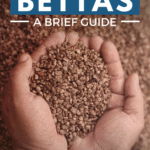Of all the options you’ll face when setting up your betta tank, few impact the appearance of your aquarium more than your choice of substrate. Whether you go with bright, colorful gravel or natural looking rocks and sand, there’s more to this decision than merely your personal aesthetics.
Your substrate also contributes to the health of your tank and betta fish, and may impose other limitations on your aquarium set-up. Are you planning on having live plants or tank mates for your betta? Read on for advice on picking the best substrate for betta tanks!
Quick Comparisons of the 6 Best Betta Substrates
| IMAGE | BRAND | DETAILS | |
|---|---|---|---|
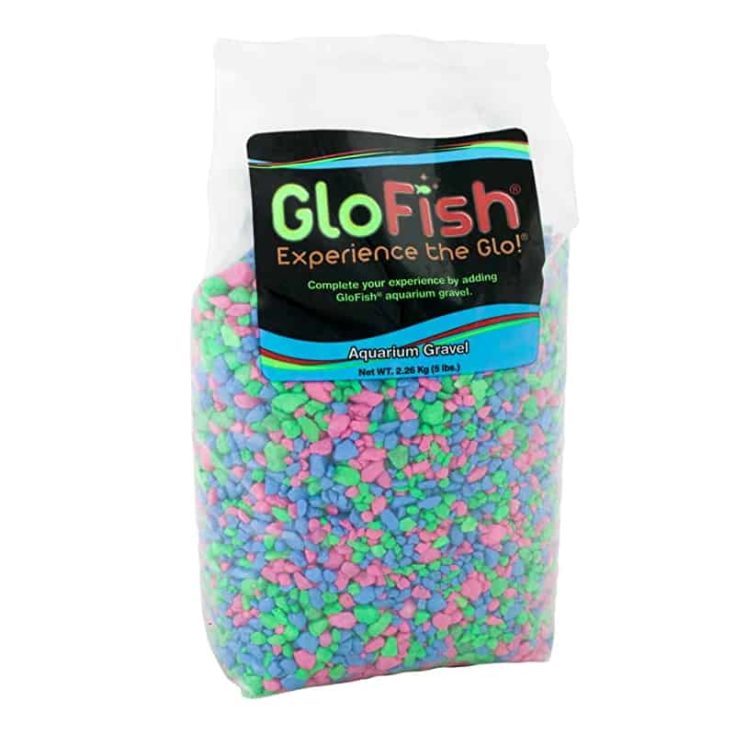 | GloFish Multi-Color Fluorescent Aquarium Gravel |
| View Product |
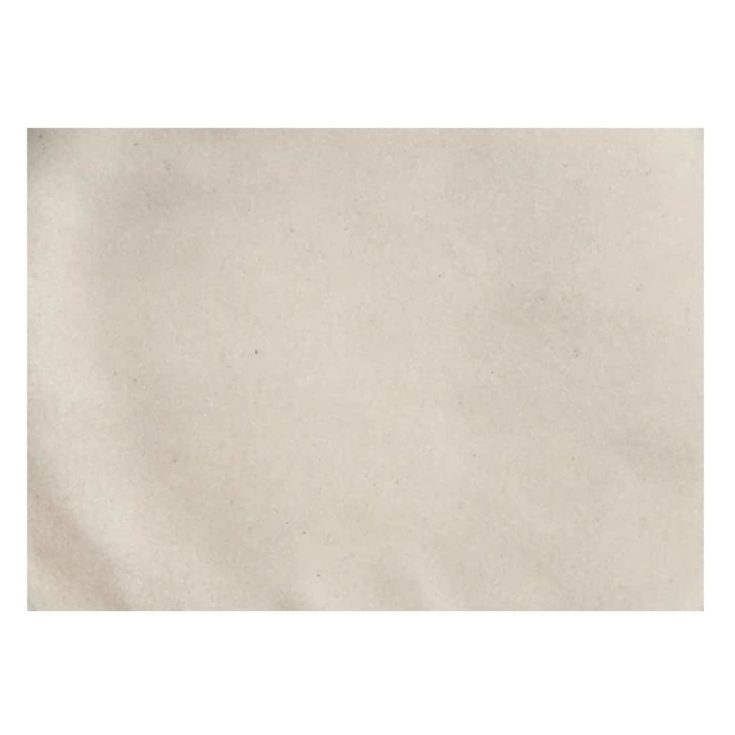 | Carib Sea Super Naturals Moonlight Sand |
| View Product |
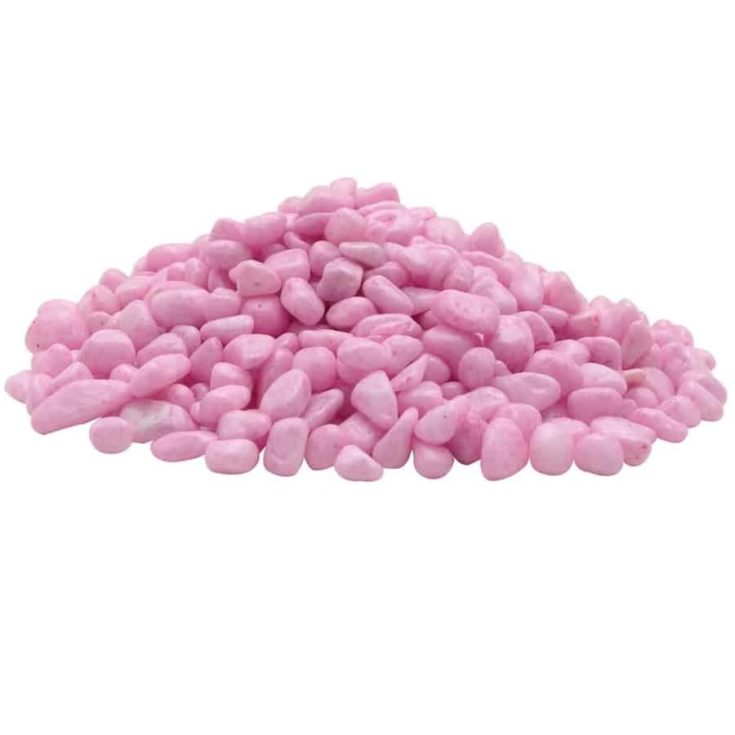 | Marina Decorative Gravel |
| View Product |
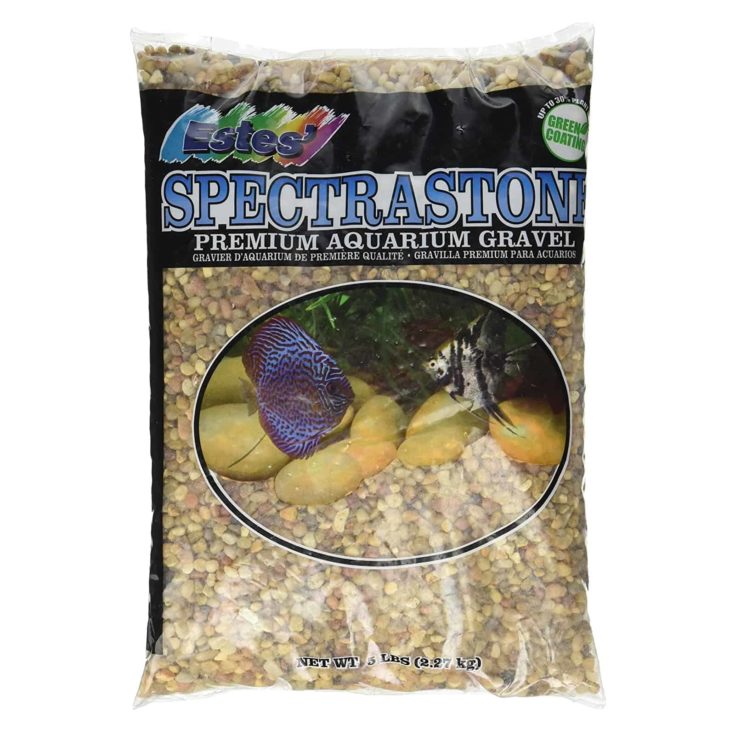 | Spectrastone Shallow Creek Regular for Freshwater Aquariums |
| View Product |
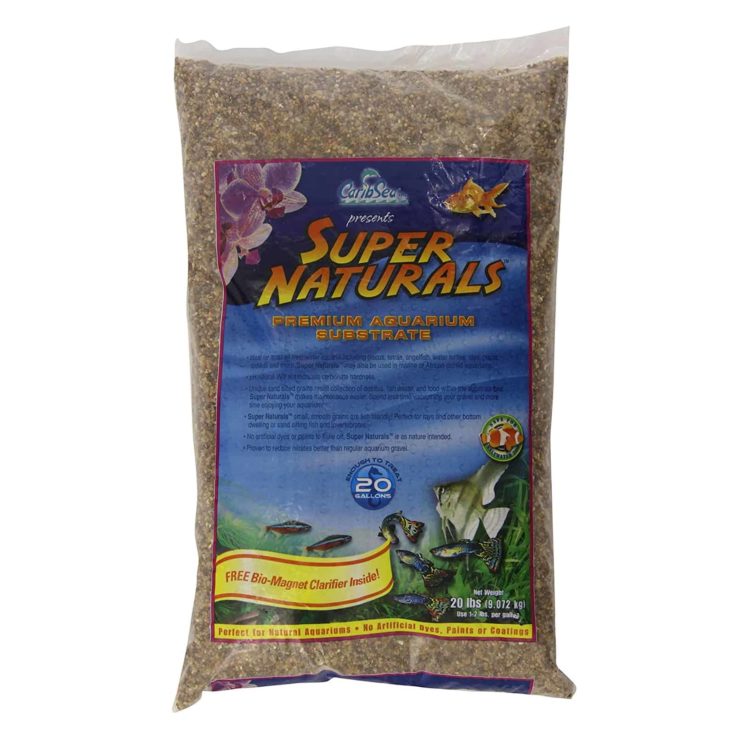 | Carib Sea Super Naturals Peace River Sand |
| View On ChewyView On Amazon |
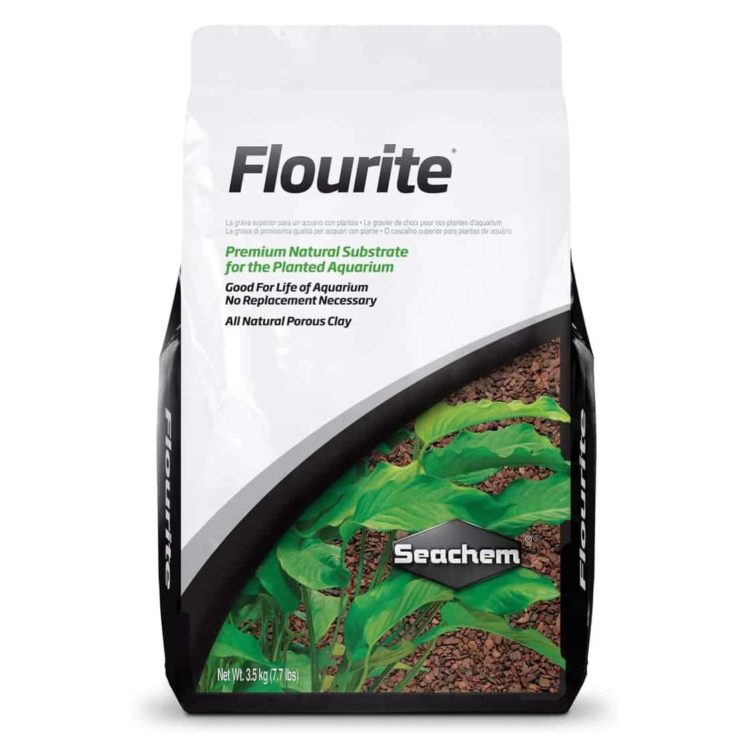 | Flourite Aquarium Substrate |
| View Product |
Choosing Substrate for Your Betta Tank
Most of us choose our aquarium substrate based on its appearance and the look we’re trying to achieve with our tank. But aquarium substrate does more than just make your tank look nice. Let’s take a quick look at these products and the roles they play in your betta set-up.
Why Should You Use Substrate in a Betta Aquarium?
You don’t have to use substrate in your aquarium. I usually avoid substrate and go with bare bottom tanks for my hospital or breeding set-ups or for raising fry. But substrate really improves the appearance of a betta or community fish tank! Looks aside, substrate may also help your aquarium by:
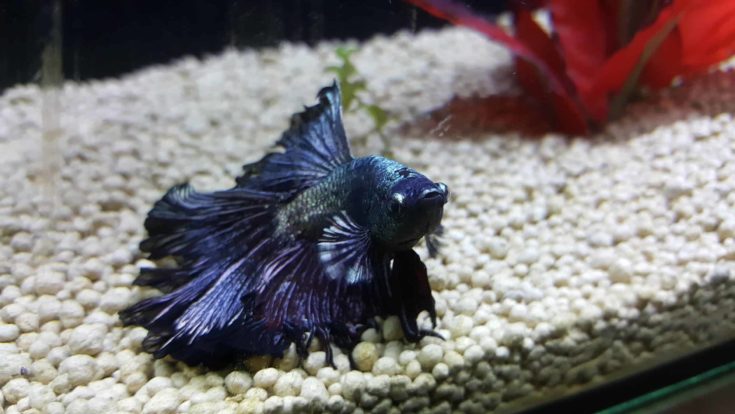
- Giving the healthy bacteria in your habitat a place to flourish, helping your tank chemistry stay balanced (if the substrate hasn’t been sealed to prevent such growth).
- Hiding the fish waste and other debris your filter doesn’t pick up between routine water changes.
- Allowing bottom dwelling tank mates to scavenge for food and providing places for them to dig and hide.
- May help live plants by supporting their root growth, but can also inhibit plants depending on the type of substrate you choose.
Types of Aquarium Substrate
There’s a wide variety of natural and artificial substrates you can use in aquariums and terrariums. For the purposes of this article I’m only focusing on products specifically manufactured for freshwater aquariums. These are the options you’ll typically see when searching for aquarium substrate:
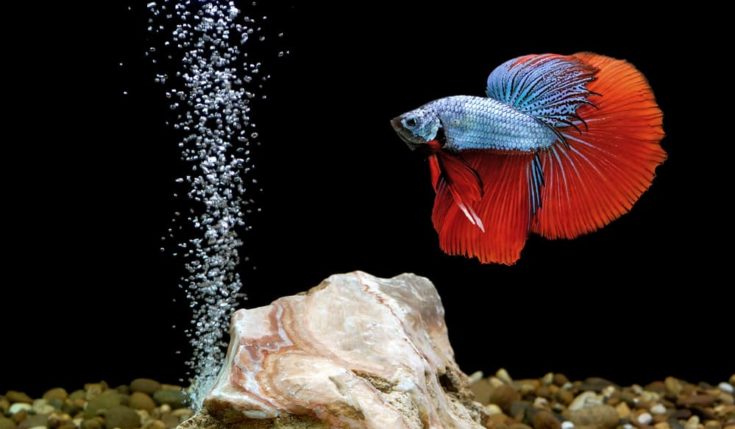
- Natural rocks, gravel or sand that’s been processed, cleaned and screened to uniform size and shape. May be porous or sealed, but most products are not sealed unless specifically noted.
- Artificial rocks, gravel or sand made from clay, industrial resins or other products such as silica. These may have a natural appearance or be brightly colored, and some products boast of other effects such as glowing under a blue light or supporting plant growth.
Natural vs Artificial Substrates
Is there a reason you should opt for a natural substrate over one artificially manufactured? It depends. In most circumstances it doesn’t make a huge difference which type of product you go with. They perform similarly in your tank and your betta won’t really mind if you pick one over the other.

There’s two situations in which your choice of natural vs artificial may matter:
- Artificially-made substrates that are brightly colored or coated in a dye may fade or chip away over time. Unless these products are sealed with a clear finish, expect them to lose color and require replacing. Sealed substrates may last longer, but they also inhibit the growth of good bacteria as well.
- Artificial substrates made especially for planted tanks promote good bacteria growth and help your plants thrive. They may also provide your plants with nutrients and trace minerals and act as a fertilizer in your tank.
Sand vs Gravel vs Rocks for Your Betta Tank
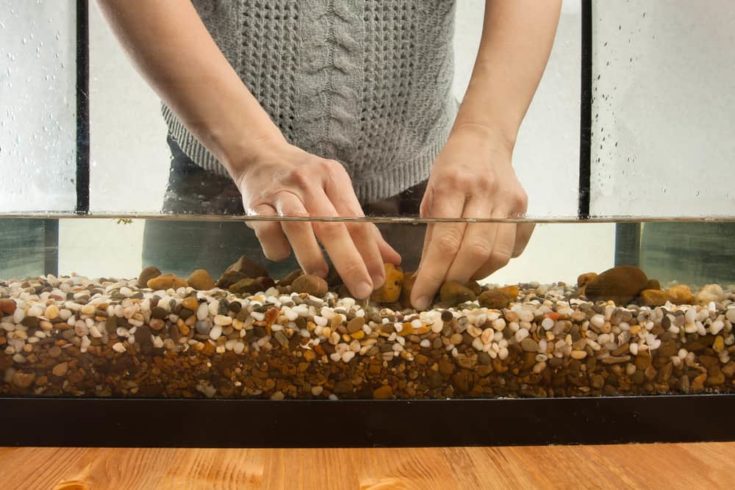
Should you opt for rock, gravel or sand in betta tanks? Rocks are usually too big to be a handy substrate on their own, although you can use small rocks underneath a layer of gravel or sand to improve the water circulation. This may help the good bacteria and roots of your plants to grow and prevent dead zones.
You’ll most likely be picking between a graveled or a sandy bottom unless you decide to split the difference and use a mix of both. I don’t worry much about dead zones in a betta tank since they can breathe oxygen, but it may matter to your betta’s companions if you have other species in the tank.
What are the benefits and disadvantages of using aquarium sand or gravel or even rocks in a betta tank?
Product
Sand
Particle Size
Between 1/16 and 2 mm in diameter
Benefits
- Recreates the natural look of an ocean, lake or river bottom.
- Won’t abrade or injure delicate bottom dwelling tank mates such as loaches.
Disadvantages
- Fine particles reduce water circulation through your substrate, leading to dead zones.
- Too fine for undergravel filters and may be picked up by other systems as well, unless the intake is covered with a fine sponge filter.
- Not ideal for planted tanks.
- May look messier than gravel and require more frequent water changes.
Product
Gravel
Particle Size
2 mm to ¼ inch in diameter
Benefits
- Best substrate for minimizing the appearance of any waste or debris in your tank.
- Ideal type for undergravel filters and too heavy to be pulled into a filter’s intake.
- Particle size allows healthy bacterial growth and promotes water circulation through substrate.
- Allows for the most flexibility in terms of tank mates, filtration systems and growing live plants.
Disadvantages
- Porous gravel substrates may allow algae or cyanobacteria to grow under the surface layer, where it is harder to eliminate.
- Sealed gravels limit algae and cyanobacteria growth to the surface layer but also diminish the opportunity for good bacteria to become established.
- Some tank mates are not compatible with graveled tanks.
Product
Rocks
Particle Size
Over ¼ inch in diameter
Benefits
- Rocks under ½ inch in diameter may be used in a layer under gravel or sand to increase water circulation in your substrate.
- Larger rocks make great decorations for your betta to explore and provide hiding places for tank mates.
Disadvantages
- Rocks are too large to use on their own as aquarium substrate in a typical betta tank.
- They don’t provide support for good bacteria, are too big to work with undergravel filters and are not helpful for growing most plants.
Using a Mix of Substrates
As I’ve already mentioned, sometimes it can be a good idea to use a mixture of rocks, sand and/or gravel instead of using a single product. Particularly in large tanks over 10-gallons, mixing sand with another, bigger substrate may decrease the dead zones and increase the water circulation in your substrate.
I usually opt for a mixture when I want the appearance of a sandy river bottom without suffering from all the disadvantages of using sand. The problem is, the heavier and bigger particles will naturally sink to the bottom of your tank. You’ll have to constantly stir the substrate to keep it equally mixed. It’s not a perfect solution.
How to Choose Your Betta Tank Substrate
Now that you know the ins and outs of the different types of substrate, how do you pick a product for your tank?
First, decide whether you prefer the look of a natural betta tank or would rather go for a fantasy or themed tank. Then decide if you’re going to have companions or just keep your betta solo. Lastly, consider the type of aquarium filter you’re using and whether growing live plants is a priority.
For Natural Looking Tanks:

- Pick the type of substrate you think looks best and that works with your filtration system, or modify the intake with a fine sponge filter.
- Choose a substrate that is safe for your betta’s companions or future tank mates, or stick with species that are suitable for the substrate you prefer.
- Use a mix of substrates to recreate the appearance of a real stream or river bottom and to help increase the water circulation through the bottom layer.
- If plants are your priority, avoid sandy substrates and opt for regular or plant-specific gravel instead.
For Fantasy or Themed Tanks:
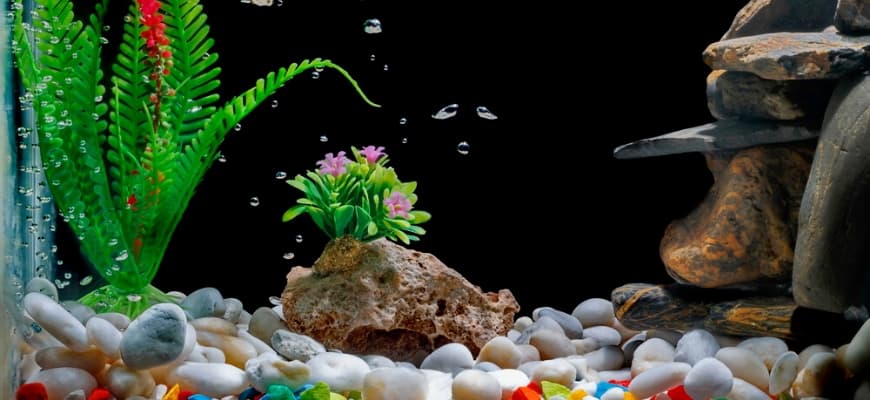
- Pick an artificially colored product in the size and color you prefer. What color gravel is best for betta fish? They don’t really care, so pick the color or colors you like best!
- Opt for products which have been sealed to prevent the substrate from losing color in your tank, even though this will decrease the opportunity for good bacteria to become established.
- Colored gravels usually fade or chip at a slower rate than sand, so if longevity is your goal opt for a gravel substrate.
- If you plan on growing live plants, choose gravel over sand even if the gravel isn’t a plant-specific product.
How Much Substrate Do You Need?
You’re usually aiming to add enough substrate to cover the bottom of your tank by 1 to 2 inches, although this may be different if you’re using an undergravel filter. In that case, follow the instructions on your filter. The rule of thumb is to use a pound of substrate for every gallon of water in your tank.
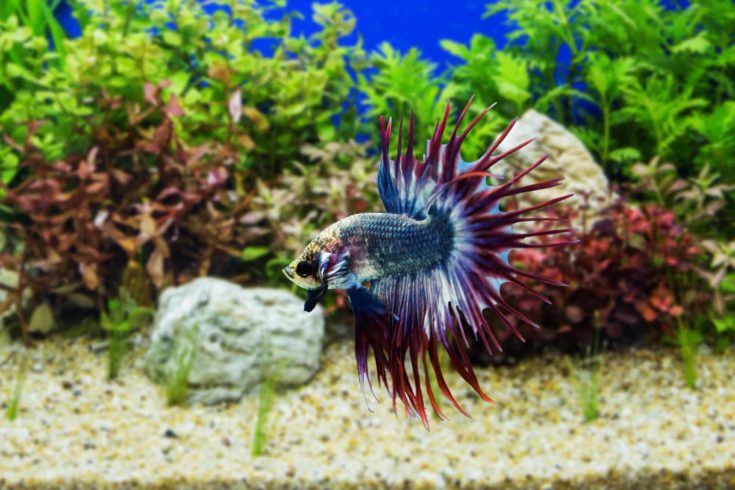
So for a 5-gallon betta tank you’d want to use about 5-pounds of substrate. This math works well for tanks under 25-gallons. For bigger set-ups, increase the amounts to 1.5 pounds per gallon if you’re using sand in your tank, since the particles are so much smaller and compact down. Your tank may look rather bare if you don’t.
Top 6 Betta Substrate Reviews
Here are 6 substrates for betta tanks that I can personally recommend. There are many other quality products out there, but these substrates are all reasonably priced and available in bags suitable for the typical betta tank.
1. GloFish Multi-Color Fluorescent Aquarium Gravel

- Substrate Type: Artificial Gravel
- Color: Mix of fluorescent blue, green and pink gravel
- Bag Size: 5-Pounds
- Supports Plant Growth: No
- Sealed/Protected by Coating: Yes
- Special Feature: Fluorescent glow under black light or LED blue light
I’m a big fan of the GloFish line, and if you like bright colors this could be the perfect choice for your tank! I definitely recommend this gravel if you buy a GloFish betta tank, but you can get the full fluorescent effect without it using a black light or LED blue light for your aquarium.
Moon lights are also a good option if you want to see the glow effect at night. The GloFish gravel is perfect for fantasy-styled tanks and comes in single colors if you prefer, or a black gravel with fluorescent accents. Children will likely love this option, but it’s also perfect for satisfying the kid inside yourself!
Pros
- Bright fluorescent gravel glows under a blue LED aquarium light or black light.
- Coordinates with GloFish aquariums and other decor.
- Gravel is sealed to prevent color from chipping off or fading.
Cons
- Doesn’t glow under ordinary aquarium lights and requires a special light for full effect.
- Sealant limits the ability of good bacteria to form colonies in your substrate.
- Despite sealant on gravel, you’ll likely see colored particles floating in your water or collecting in your filtration system.
2. Carib Sea Super Naturals Moonlight Sand

- Substrate Type: Natural Fine Sand
- Color: White
- Bag Size: 5-Pounds
- Supports Plant Growth: No
- Sealed/Protected by Coating: No
- Special Feature: None
If you’re looking to recreate a beach setting or natural sandy stream, then this beautiful pure white sand from Carib Sea might be the pick for your tank. It’s an all-natural substrate that’s been cleaned, screened to uniform size and won’t injure the more delicate aquatic species.
This is a great option for betta tanks with invertebrates such as snails or shrimp, and would work well for a solo betta-only set-up too. You may have to adjust your filter intake or add a sponge filter, however, and it’s not a good option for use with undergravel filters. But if you prefer a sandy substrate this is an excellent choice!
Pros
- Natural sand is pure white in color and has been screened to uniform size and shape.
- Soft sand is perfect for delicate betta tank mates like loaches and invertebrates.
- No artificial colors or dyes used in this product.
Cons
- Sand compacts down and may create dead zones which can be lethal to plants and bottom dwelling betta companions.
- Unlikely to support plants or the healthy bacteria that help stabilize your water quality.
- Fine sand can be sucked into filtration systems and is difficult to rinse clean before adding to your tank.
3. Marina Decorative Gravel

- Substrate Type: Artificial Gravel
- Color: Pink or Rainbow
- Bag Size: 1-Pound
- Supports Plant Growth: No
- Sealed/Protected by Coating: Yes
- Special Feature: Rinse-Clean gravel is dust free
If you’d like to add some color to your tank but don’t want the fluorescent look, consider this high quality decorative gravel from Marina. The epoxy coating locks in the color so it won’t fade or easily chip. This gravel is also a rinse-clean variety that produces no dust, so it’s really easy to add to your tank.
Marina gravel comes in two colors, a bright pink and a mix of rainbow colors. It’s a very long-lasting option. While it’s only available in single-pound bags, it could be a good choice if you’re just adding a touch of color to your tank. If you mix it with another type of gravel or sand you might be really happy with the look and effect!
Pros
- Epoxy coated gravel is the ideal size for a small betta bowl or tank and works with any type of filtration system.
- Available in bubblegum pink or mixed rainbow colors.
- Gravel is easily rinsed clean and produces no dust, so it’s ready to be added straight to your tank.
Cons
- Epoxy coating limits the ability of bacteria to establish colonies in your substrate.
- Substrate does not support plant growth but shouldn’t hinder it either.
- Very small bags could get expensive if filling larger tanks. You’ll need 5 bags for a 5-gallon betta tank if you don’t mix with another product.
4. Spectrastone Shallow Creek Regular for Freshwater Aquariums

- Substrate Type: Natural Gravel
- Color: Mix of Natural Colored Gravel
- Bag Size: 5-Pounds
- Supports Plant Growth: No
- Sealed/Protected by Coating: Yes
- Special Feature: Fine gravel with diameter 2 to 4 mm
For recreating a natural lake or river bottom habitat, this betta fish gravel could be the best choice for your tank! This gravel has been screened to size and polished to highlight its natural colors. It’s also coated in a polymer so it won’t alter your water chemistry or change your water’s pH.
At 2 to 4 mm in diameter, each piece is just a bit bigger than a sand particle but is heavy enough to be safe with most filtration systems. It’s also very reasonably priced for such a good quality product. You can use it alone in your tank or mix it with another gravel or sand product to create a more complex affect!
Pros
- All-natural product that’s been cleaned, polished and screened to size.
- Polymer coating prevents gravel substrate from altering your water chemistry.
- Gives your aquarium the appearance of a rocky lake bottom or stream.
Cons
- Polymer coating limits the ability of good bacteria to establish colonies in your substrate.
- Colors are a natural mix and include light and dark-colored gravel, so if you want a uniform appearance this may not work.
- Gravel is likely too fine for use with undergravel filters.
5. Carib Sea Super Naturals Peace River Sand

- Substrate Type: Natural Coarse Sand
- Color: Mix of Natural
- Bag Size: 20-Pounds
- Supports Plant Growth: No
- Sealed/Protected by Coating: No
- Special Feature: Comes with Bio-Active packet of Good Aquarium Bacteria
If you really want the sandy look for your tank but are worried about the downsides to using fine substrates, then this natural coarse sand from Carib Sea might be the option for you. Unlike most aquarium sands, the Peace River product is just a bit under 2 mm in diameter, so it’s almost a fine gravel.
While it’s been cleaned, screened and polished, this substrate isn’t coated or sealed. So bacteria can easily establish colonies in the bottom of your aquarium. It even comes with a packet of bacteria you can add to your tank! This is a great product for tanks of all sizes, though you may prefer a smaller bag for tanks under 20-gallons.
Pros
- All-natural coarse river sand is screened to uniform size and polished to enhance the natural colors.
- Chemically neutral and will not alter your aquarium’s water chemistry.
- Included packet of Bio-Active bacteria keeps your water clear and helps avoid “new tank syndrome”.
Cons
- Although it’s coarser than most sand substrates you may still find it challenging to grow plants using this product alone.
- If you prefer a uniform appearance in your substrate you may not like the random mix of colors of this sand.
- Will likely be too fine for use with an undergravel filter, but is heavy enough not to get sucked into other filter’s intakes.
6. Flourite Aquarium Substrate

- Substrate Type: Natural Manufactured Clay Gravel
- Color: Natural Red-Brown Color
- Bag Size: 5-Pounds
- Supports Plant Growth: Yes
- Sealed/Protected by Coating: No
- Special Feature: Iron-rich clay supports plant growth
If you’re dreaming about having a densely planted tank to highlight your betta, then this might be the substrate you need. Flourite is known throughout the aquarium trade for being a top choice for supporting plant growth. You won’t have to add any modifiers or use a layer of rocks to make this substrate work.
This is an ideal substrate for betta tanks because it looks natural and the porous clay surface provides plenty of room for establishing healthy bacteria in your tank. You won’t have problems with dead zones and the clay won’t injure more delicate fish. There’s also a sand version of this substrate if you prefer the smooth look!
Pros
- Ideal substrate for planted tanks and helps promote plant growth and longevity.
- Clay gravel is porous to allow growth of healthy bacterial colonies and large enough to promote water circulation through your substrate.
- Works with any type of filter and suitable for most aquatic species.
Cons
- Clay substrates are very dirty and hard to rinse clean, so you may need to do several water changes before your aquarium water is clear.
- Not available in many different colors and does not come in artificial or bright rainbow options.
- Not ideal for adding to active tanks or those that already have fish or plants in them, but a good option for starting new tanks.
Conclusion
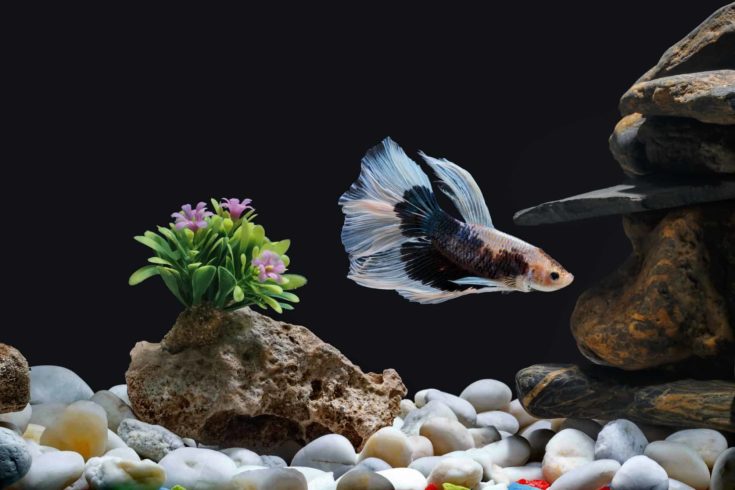
Should you buy your betta fish rocks, sand or a gravel substrate? You can always mix them for a custom look, but sand or gravel are usually better options for betta tanks than rocks. The substrate you choose will impact your plants and the populations of good bacteria in your tank, but your betta will be fine with any of the listed options.
If you’re still not sure which substrate to choose:
- If you like bright colors or prefer a fantasy or themed tank go with the GloFish or Marina substrates.
- The GlowFish is the Best Overall for Bettas but the Marina also adds a nice touch of color to a tank.
- If you want a natural appearance, the Carib Sea and Spectrastone substrates are all good options, depending on how coarse or fine you prefer it.
- For planted tanks, the best option is to use Flourite or at least ½ to ¾ Flourite mixed with another substrate.
